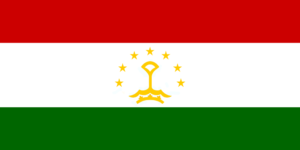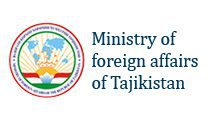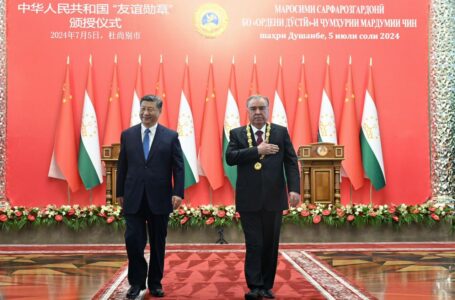Geography: Republic of Tajikistan is a state located in Central Asia; it borders on Uzbekistan, Kyrgyzstan, China and Afghanistan. The total area is 143.1 thousand square kilometers.
National currency: Somoni (1 USD = 7.86 Somoni as of 13 June 2016)
Capital: Dushanbe
Major cities: Dushanbe, Khujand, Kurgan-Tube, Kulyab, Khorog, Pendjikent, Istravshan, Tursunzade
State language: Tajik
Religion: The main religion is Islam. There are also small communities of Orthodox Christians, Protestants and Judaists
National holiday: Independence Day – 9 September
National domain: .TJ
STATE BORDER

The length of the state border of the Republic of Tajikistan with Uzbekistan in the western and northern directions is 1161 kilometers; with Kyrgyz Republic – 987 kilometers; with Afghanistan in the south – 1332 kilometers; and with China in the east – 495 kilometers.
POLITICAL SYSTEM
Tajikistan acquired sovereignty in September 1991, when the Declaration of Independence was adopted. In December 1991 Tajikistan joined the Commonwealth of Independent States (CIS). Since 1992 Tajikistan has been a member of the United Nations, OSCE and other international organizations.
The President of Tajikistan is the head of state and of the executive branch. The legislative power belongs to the bicameral parliament (Majlisi Oli). Members of the lower chamber – Majlisi Namoyandagon – are elected for a five-year term.
STATE FLAG

The state flag of the Republic of Tajikistan consists of three horizontal stripes – of red, white and green colors. Red color symbolizes unity of Tajik people and its friendliness towards other nations of the world. White is a color of the main source of country’s wealth – cotton, as well as the color of ice and snow in the mountains. Green stripe symbolizes lush and fertile valleys of Tajikistan. On the white stripe, there is a depiction of a stylized gold crown with a semicircle above it formed by seven stars.
STATE EMBLEM

The state emblem of the Republic of Tajikistan is a depiction of a stylized gold crown with a semicircle of seven stars above it, aglow with rays of the sun, rising above the mountains, covered with snow. Ears of wheat surround the right side and cotton branches the left. The wreath is enlaced by a tricolor ribbon; in the lower sector of the emblem, there is a book placed on a stand.
ADMINISTRATIVE AND TERRITORIAL DIVISION
Tajikistan consists of Gorno-Badakhshan Autonomous Oblast (province), Sughd Oblast, Khatlon Oblast and 11 Districts of Subordination. The capital city of Tajikistan is Dushanbe. There are 19 towns and 48 smaller cities (the so-called “settlements of urban type”).
POPULATION

More than 8 million people belonging to over 80 nationalities and ethnic groups reside in Tajikistan. Tajiks (one of the most ancient peoples in the world, belonging to the Iranian group of the Indo-European family) make up 80 percent; Uzbeks – 15.3 percent; Russians – about 1.1 percent; there are also Tatars, Kyrgyz and other ethnic groups. The density of population is 48 persons per square kilometer.
NATURE

Mountainous landscape prevails in Tajikistan. Fergana valley is located in the northern part of the country; in the north-west and in the central regions, there are the Turkestan, Zeravshan, Gissar and Alai mountain ranges; in the south-east – the Pamiri mountain system (the highest peak reaches the altitude of 7,495 meters above the sea level). The south-west of the country is relatively flat (the Vakhsh and Gissar valleys). Rivers and lakes of Tajikistan are fed by glaciers. The total length of Tajikistan’s 947 rivers is 28,500 kilometers. They constitute nearly 60 percent of hydro resources in Central Asia.
Tajikistan is a preferred destination for international highland tourism and alpinism. The mountains of Tajikistan are spectacular; the landscape is a combination of the highest ranges of Eurasia, grassy alpine meadows and the cleanest rivers.
The mountainous and meadow-land soils are grey and brown. The vegetation is eremic, steppe and highland-meadow.
At present, there are four nature reserves (Tigrovaya Balka, Romit, Dashti Jum, and Zorkul), 13 wildlife sanctuaries and one national park in Tajikistan. The total protected area occupies 21 percent of Tajikistan’s territory.
The best time to visit Tajikistan is from March to October.
NATURAL RESOURCES

Tajikistan’s natural resources are very diverse. Many deposits of complex ores, rare and precious metals are discovered in Tajikistan including: zinc, lead, molybdenum, wolfram, copper, gold, silver, antimony, mercury, fluor spar, black tin, uranium, bismuth, iron, manganese, sodium chloride, magnesium and other metals with export value. Among Tajikistan’s famous deposits are the following: gold mines of Penjikent and Shugnan; silver mines of KonimansuriKalon (Big Kanimansur); the antimony mine of Anzob; marble mines in Vanch, Penjikent, Darvaz, Shakhristan; and other fields. There are deposits of coal, gas, oil, marble and other raw materials, that can be used in the construction industry. Tajikistan is the leader in Asia in coal reserves. The total geological stock of coal is estimated to be 4 billion tons. Eighty percent of this coal is of coking type.
Tajikistan has plenty of unique healing springs and sources of mineral water.
WATER RESOURCES

The main rivers are: Syr-Darya, Amu-Darya, Vakhsh, Pyanj, and Zeravshan. The big irrigation canals are: the Gissar, the Dalverzin, the Tajik segments of the Big Fergana and the Northern Fergana canals.
Tajikistan has many lakes – more than 1,300 with the total area of 705 square kilometers. The biggest lakes are Karakul, Sarez, and Yashikul. Most of the lakes are located at the altitude of 3,500 meters above the sea level.
Biggest water reservoirs:
- Kairokkum – 4,160
- Nurek – 10,500

Biggest glaciers:
- Fedchenko – 93.6
- Garmo – 114.6
- Grumm-Grzimailo – 19.84
Enormous deposits of snow and ice are concentrated in the highland areas of Tajikistan. The boundary of perpetual snow in the west lies at the altitude of 3,500-3,600 meters above sea level, and in the east it elevates up to 5,800 meters above sea level. The total area of glaciers in Tajikistan is 8,476 square kilometers. More than one thousand Tajikistan’s glaciers exceed 1.5 kilometersin length. Sixteen of them exceed 16 kilometers in length, including the Fedchenko and Grumm-Grzhimailo glaciers.
CLIMATE
Climate in Tajikistan is moderate, sharply continental and dry. In January, temperatures in lowland areas fluctuate from 0 С to +2 С; in mountainous areas down to -30 C. In June temperatures in valleys fluctuate from +23 С to +40 C; in the mountains – from +4 С to +15 С.
















